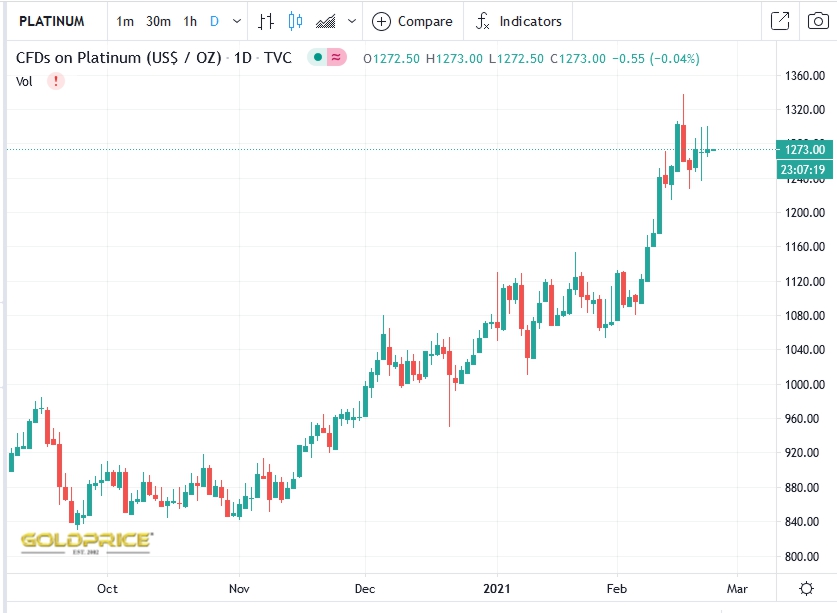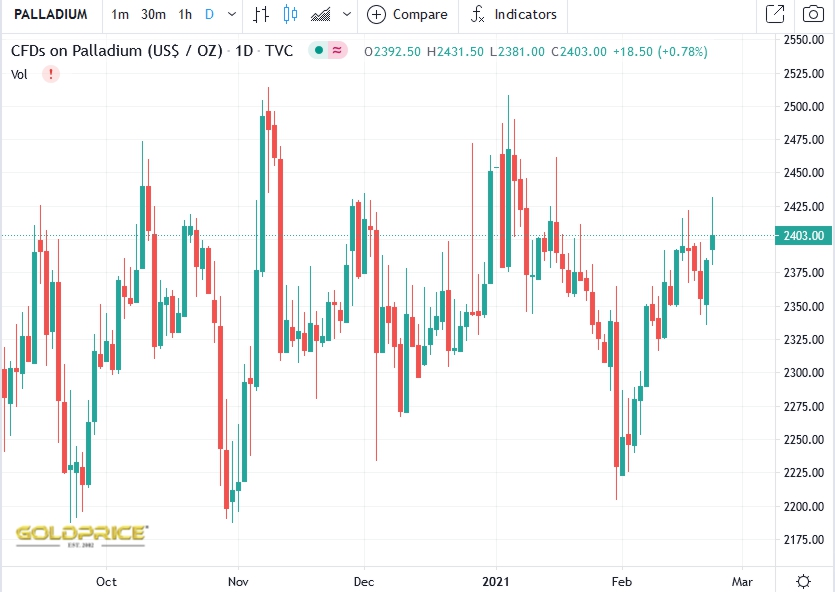Catalytic Converters Driving High PGE Prices
Current three way catalytic converters have been in use since the early 1980’s. In brief, they use rhodium at the front end in a low oxygen environment to reduce nitrogen oxides to nitrogen gas and oxygen. This is followed by a more oxygen rich environment, created by oscillating the fuel mixture, with platinum and palladium as the catalysts. These catalysts oxidise carbon monoxide to carbon dioxide and unburned hydrocarbon to carbon dioxide and water.
Modern cat converters contain around 3 to 6g of the three PGE’s. A used converter is worth around USD100. Old converters can be worth a much as USD1,000 because of much higher PGE contents.
Platinum has been on a tear since November and palladium has maintained its premium. Both charts courtesy GoldPrice.


Rhodium is in a class of its own. Yesterday it was trading at USD23,400/oz, or USD752/g. With increasingly strict worldwide emission standards these prices can be expected to rise as more PGE is required to further clean exhausts. However, one would imagine that manufacturers are seeking ways to minimise rhodium consumption.
Now the upshot of the above is a steep rise in converter theft. For example in Denver,US reported thefts in 2019 were 15, campared with 257 in 2020. It is a similar story across the US and in the UK. For many vehicles a converter can be removed within 60 seconds. Quite a profitable business model.
However car manufacturers are responding. Several, such as Honda make a plate that covers the converter, making it very difficult to remove, particularly if the vehicle is on the ground rather than a hoist. Others plan to incorporate the converter in the engine bay, making removal a long and laborious process.
PGE prices are likely to remain high while internal combustion engines dominate. However, should electric vehicles live up to the hype, then a primary demand for PGE’s will evaporate.
